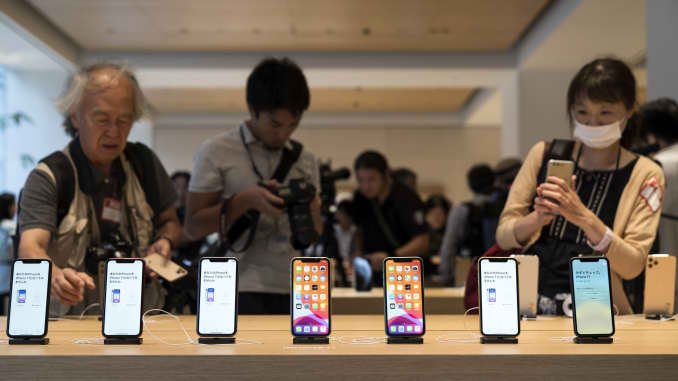Facebook and Amazon executives were 850 miles apart on Wednesday. But they were a lot closer when it came to unveiling their vision for the future of computing.
At an event in San Jose, California, Facebook introduced its plan for augmented reality glasses, where users will be able to pull up a visual display on top of what’s actually in front of them. Up north in Seattle, Amazon announced Echo Frames, lightweight glasses with the Alexa voice assistant embedded in them.
The dueling events hosted by the two internet giants showcased how the face is becoming the next tech battleground after smartphones, tablets and connected devices like the watch. Microsoft, Google and Apple all have their own approaches to augmented reality and virtual reality, but the race for the face is particularly critical to Facebook and Amazon, because they have yet to establish computing gateways. Microsoft won the PC era and now has a tablet business, while Apple and Google have the dominant mobile operating systems.
“I’ve been saying for a while that augmented and virtual reality is going to be the next major computing platform,” Facebook CEO Mark Zuckerberg said on stage at the Oculus Connect 6 conference. “You know, there’s only so much you can do with apps without also shaping and improving the underlying platform.”
Real money is going into building the next platform: Earlier this week, Facebook announced the purchase of CTRL Labs, a gesture recognition start-up that claims to be able to read electrical signals from your spinal cord and translate them into signals that computers can understand. Facebook paid between $500 million and $1 billion for the early-stage company, CNBC reported, acquiring technology that could potentially control computer glasses without a touchscreen, keyboard, or mouse.
To date, the market for computing headsets has hit a number of snags, because of high price points, awkward form factors and, in some cases, the need to be tethered to a bulky computer. Google took an early stab at a product in 2013, with Google Glass, which failed to gain traction among consumers but later found a market on factory floors and assembly lines, where workers now have hands-free access to computers. Meanwhile, heftier VR products from Facebook’s Oculus and Magic Leap have mostly been for gamers.
Momentum is picking up. For now, most AR apps use a phone’s screen and camera, but the technology industry is pushing toward lightweight AR glasses. Fewer than 1 million pairs of AR glasses will be sold in 2019, a number that could rise to over 30 million by 2023, according to an estimate from market researcher IDC. Apple CEO Tim Cook has said AR is “profound” and his company has integrated AR tools into the iPhone’s operating system. Microsoft’s second AR headset, Hololens 2, is expected to be released this month.
“Suddenly, it went 0 to 60,” said Mike Boland, an analyst focusing on the AR market at ARtillery. “There were no glasses, or the overall glasses space was in a rut, and now all of a sudden, there are all of these glasses to choose from.”
In the words of Gene Munster from Loup Ventures, “There’s now an arms race to capture the next computing platform.”









